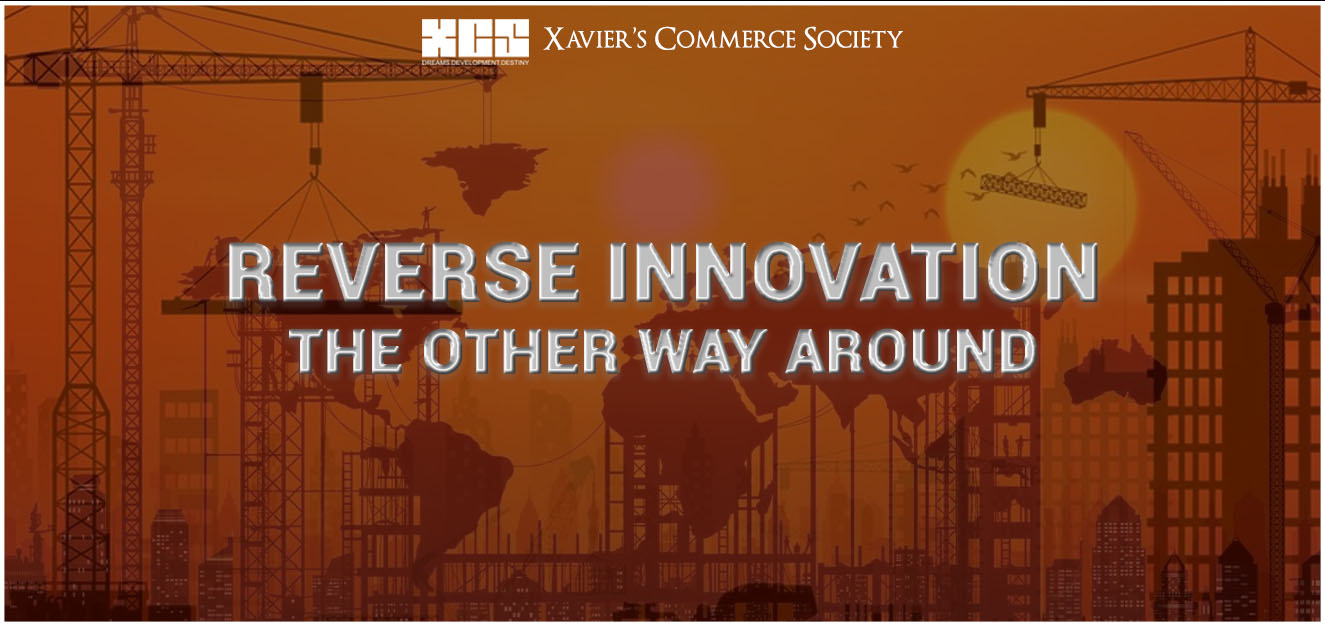


As India strives to achieve milestones in establishing itself as the kingpin of global markets, various initiatives must be undertaken to enable it to achieve these objectives. One such initiative is reverse innovation, a situation when a multinational corporation develops market-relevant innovations, and then exports both the knowledge and the innovation to developed countries. Studies have shown that such reverse innovations result in cheaper costs as compared to those developed in laboratories of wealthy nations.
Developing nations like India are now a very attractive and potent target market for many global conglomerates to enter, capitalise on, and create a stronger hold due to its citizens’ rising disposable incomes, the nation’s largest and fastest-growing middle class as well as the availability of cheap labour. The products developed in the western countries are still out of reach, expensive, or unaffordable for the middle class in India.
Despite having the world's largest middle class population, it is evident that the products developed in western or developed economies for their average income families would find very few consumers in nations like India. This is because Indian consumers' expectations for product price to features are not aligned with those of the products developed in developed nations in general and western markets in specific for their average income families.
Thus, reverse innovation enables them to access new emerging markets and offer new growth opportunities by creating a completely new demographic. Moreover, these markets also act as a litmus test for them to determine how the market that they subsequently plan to introduce to, would react to the product with more applications compatible with their demands and expectations. The economies of scale or volume sales in the local markets, as well as higher top- and bottom-line profit margins gained through low cost production in developing countries and higher priced product sale in the western market or any other developed nation, encouraged also by currency rate arbitration, clearly benefits the multinational corporations.
Such investment by multinationals would result in an increase in industrialisation. The Indian economy would experience an increase in FDIs as more and more multinationals choose to produce and/or invent new products in India for both domestic and western markets. Additionally, indigenous multinationals would instinctively increase their investments to design and build cutting-edge R&D facilities that would inspire groundbreaking innovation and engineering. Through this, the nation would quickly advance through several developmental phases and establish a more diversified economy.
By enabling smart and nimble engineering and production solutions for critical problems, reverse innovation could, in turn, help to improve the overall eco-system, which includes Tier I and II vendors, technology providers, and educational institutions that support, fortify, and enable this unprecedented explosion. As a result, new resources will be produced.
Be it Tata Motors with its local and price conscious Tata Nano, providing an alternative to premium global companies like Ford, Tata’s Swachh - the cheapest water purifier in the market which uses nanotechnology, or Nestle’s Maggi - low-cost, low-fat dried noodles developed for rural India and Pakistan which later found a market in Australia and New Zealand as a healthy, budget-friendly alternative, it has been proven time and again, that reverse innovation is not only conceivable, but also feasible.
However, reverse innovation, the process of developing ideas in an emerging market and coaxing them to flow upward to western or developed markets, is uncommon among businesses as it poses immense challenges. The major challenges are the income gap, infrastructural gap and the sustainability gap between rich countries and the developing ones.
A business must overcome its prevailing logic as well as the established thinking that directs its operations. Usually, this entails significant changes: scrapping outdated organisational structures in favour of brand-new ones, redesigning processes for product development and manufacturing, and recalibrating the sales force.
In conclusion, reverse innovation with its ‘Fortune at the Bottom of the Pyramid’ ideology provides an ideal situation as it benefits both the multinational corporations by allowing them to tap into new markets as well as the emerging economies by generating employment and driving innovation. Will multinationals be able to capitalize on India’s immense potential for implementing reverse innovation and tap into a gold mine of opportunities? Or, will technological and deep-rooted institutional challenges prevent any real change, thus making it a mere visionary idea?